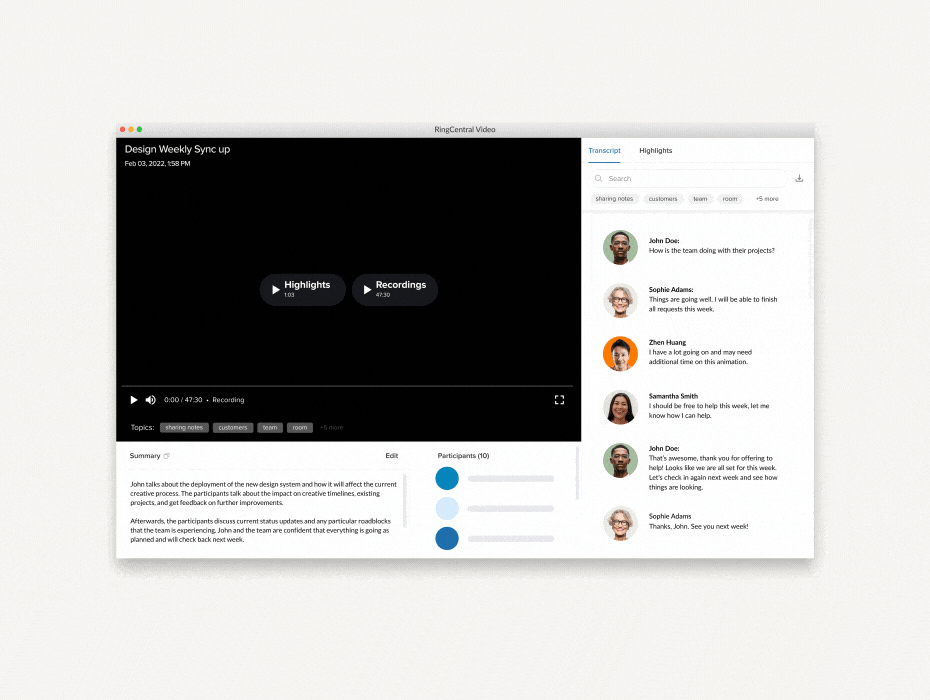There’s power in speaking up—particularly in the workplace. Whether it was connecting colleagues during those isolated early pandemic days or unlocking hidden insights from customer conversations, voice communications pull more weight than you might expect.
Funny enough, it wasn’t that long ago that many pundits predicted the death of the phone call. But the pandemic changed just how much we value using our voices in our day-to-day work.
Voice is here to stay, and it’s poised to revolutionize how we work. Here are our predictions on where voice technologies are headed:
1. Voice-assisted technologies are on the rise
Having an assistant is a huge time-saver—and with voice technologies on the rise, that extra help is no longer the domain of high-level executives only.
From Alexa to Siri, voice assistants have become key helpers in our personal lives. Sixty-five percent of adults aged 25 to 49 say they talk to a voice-enabled device at least once a day and about half of U.S. adults use a voice-activated device while driving.
We’re using voice assistants to search for information, provide directions, play music, and perform countless other tasks every day. As these technologies continue to proliferate, we’ll be able to do more at work—scheduling or cancelling meetings, reading out notes, and more—simply by asking.
2. AI is making voice an ambient experience
As voice technologies become more sophisticated and powerful, they are seamlessly and invisibly making life easier for workers—while providing tremendous impact.
This is thanks to AI, which layers with voice technologies to reduce key communication challenges.
Take Oracle’s enhanced digital voice assistant, which can recognize not only everyday dictionary terms but also acronyms and jargon used internally by employees.
It also offers multiligual support and customized vocabulary capabilities so that it understands exactly what users need.
Stay informed with RingCentral
3. 5G will change what’s possible with phone calls
You may be familiar with 5G’s ability to stream data at ultra high speeds but you may not have considered how this will affect how we use the phone.
Until 5G came along, problems such as network congestion and latency limited how efficiently voice data could move between endpoints. For users, this caused familiar issues such as lags and jitter during calls.
Not only does the speed of 5G do away with these quality issues, but the extra bandwidth supports innovative and interactive new features, such as the ability to share screens or play a game together, during a regular old voice call.
4. Conversational AI will take efficiencies to new levels
If some of these advanced capabilities sound like pipe dreams, that may be due to experiences with early versions of voice assistants and bots. Admittedly, these often lacked the sophistication to understand queries and requests that weren’t preprogrammed, and often resulted in user frustration—and likely the need to speak with a human.
But Conversational AI is transforming bot interactions to be as effective as those with real people. Conversational AI uses technologies such as machine learning and natural language processing to improve how bots interact.
This opens up opportunities to create automated channels that are more engaging, human, and better able to get to the heart of user needs.
5. Voice investments will boost revenue
The use of voice innovations doesn’t only drive better employee and customer experiences—it also has a big potential to affect the bottom line.
This is due to improved efficiencies and the ability to drive better results with less lift. For example, with voice-based solutions you can:
- Provide faster customer responses, shrinking call times and improving satisfaction
- Offer more personalized services and experiences
- Reduce the amount of time employees spend on mundane tasks such as scheduling
Improving experiences and removing barriers is an opportunity for revenue growth, due to a resulting boost to customer satisfaction and employee retention and less time lost to inefficiencies.
According to a study from the Center for the Future of Work, innovative companies plan to spend 3% of total revenues in the next few years building voice capabilities—and are banking on more than double the ROI from these voice investments.
More ways voice will disrupt the workplace
These insights are just the tip of the iceberg.
From reducing the risk of cyberthreats to gleaning actionable insights from the tone and phrases used in customer phone interactions, voice communications are transforming countless aspects of work as we know it.
To find out all the ways voice will continue to disrupt the workplace over the next few years, download our new eBook now.
Originally published May 12, 2022, updated Jan 18, 2023











